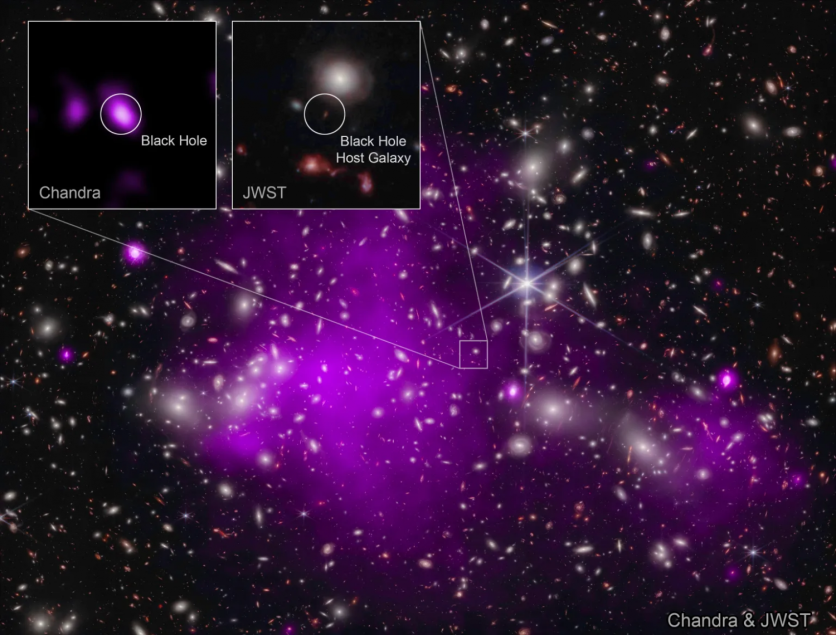Astronomers have made a record-breaking discovery with the most distant black hole ever observed in X-rays. This black hole, found through NASA's Chandra X-ray Observatory and James Webb Space Telescope, is in an early growth stage, exhibiting a mass comparable to its host galaxy.
This revelation may offer insights into the formation of some of the earliest supermassive black holes in the universe. It is also reportedly the oldest black hole yet discovered.

Oldest Black Hole Formed 470 Million Years After the Big Bang
The research team, led by Akos Bogdan of the Center for Astrophysics | Harvard & Smithsonian, combined data from these two NASA telescopes, unveiling the distinctive signature of a black hole formed a mere 470 million years after the Big Bang.
"We needed Webb to find this remarkably distant galaxy and Chandra to find its supermassive black hole," Bogdan explained as he emphasized the importance of both telescopes in this discovery.
The team leveraged gravitational lensing, a cosmic magnifying effect, which amplified the detected light. The black hole was located in a galaxy named UHZ1, within the vicinity of the galaxy cluster Abell 2744, positioned 3.5 billion light-years away from Earth.
However, Webb revealed that the galaxy is much more distant than the cluster itself, existing at 13.2 billion light-years from Earth, a time when the universe was just 3% of its present age. Since the universe is 13.7 billion years old, NBC reported that puts the age of the black hole at 13.2 billion years.
Over two weeks of observations with Chandra, the team identified intense, superheated, X-ray-emitting gas within this galaxy. NASA explained that this is a hallmark of a growing supermassive black hole.
The combined magnification effect due to gravitational lensing elevated both the infrared signal captured by Webb and the faint X-ray source detected by Chandra.
This discovery is essential for understanding the mechanisms by which certain supermassive black holes accumulate immense masses shortly after the Big Bang.
It prompts inquiries into their origins - whether they result from the direct collapse of massive gas clouds, giving rise to black holes with a weight ranging from 10,000 to 100,000 times that of the sun, or if they emerge from the explosions of initial stars, resulting in black holes with a mass merely between 10 to 100 times that of the sun.
Outsize Black Hole
The team's findings strongly indicate that the black hole emerged with a substantial mass, which is approximately between 10 and 100 million times that of the sun.
This spectrum aligns with the collective mass of all the stars in the galaxy it occupies, presenting a striking divergence from black holes situated in the cores of galaxies in the nearby universe.
This discovery supports theoretical predictions from 2017 for an "Outsize Black Hole" that directly formed from the collapse of a massive gas cloud.
"We think that this is the first detection of an 'Outsize Black Hole' and the best evidence yet obtained that some black holes form from massive clouds of gas," Priyamvada Natarajan of Yale University, a co-author, noted.
"For the first time, we are seeing a brief stage where a supermassive black hole weighs about as much as the stars in its galaxy before it falls behind," she added.
The findings of the study were published in Nature Astronomy.
Related Article : NASA's Chandra Unveils Time-Lapse Video of the 1840s Great Eruption

ⓒ 2025 TECHTIMES.com All rights reserved. Do not reproduce without permission.




